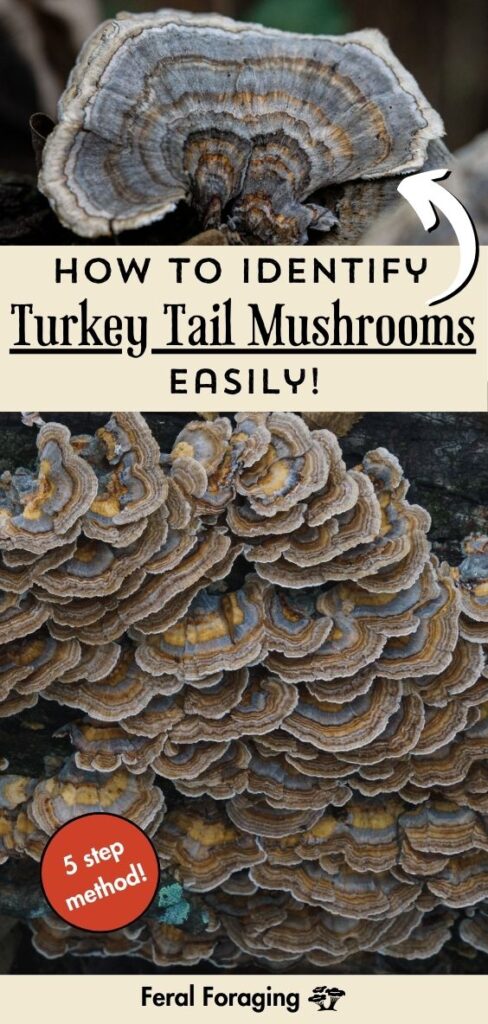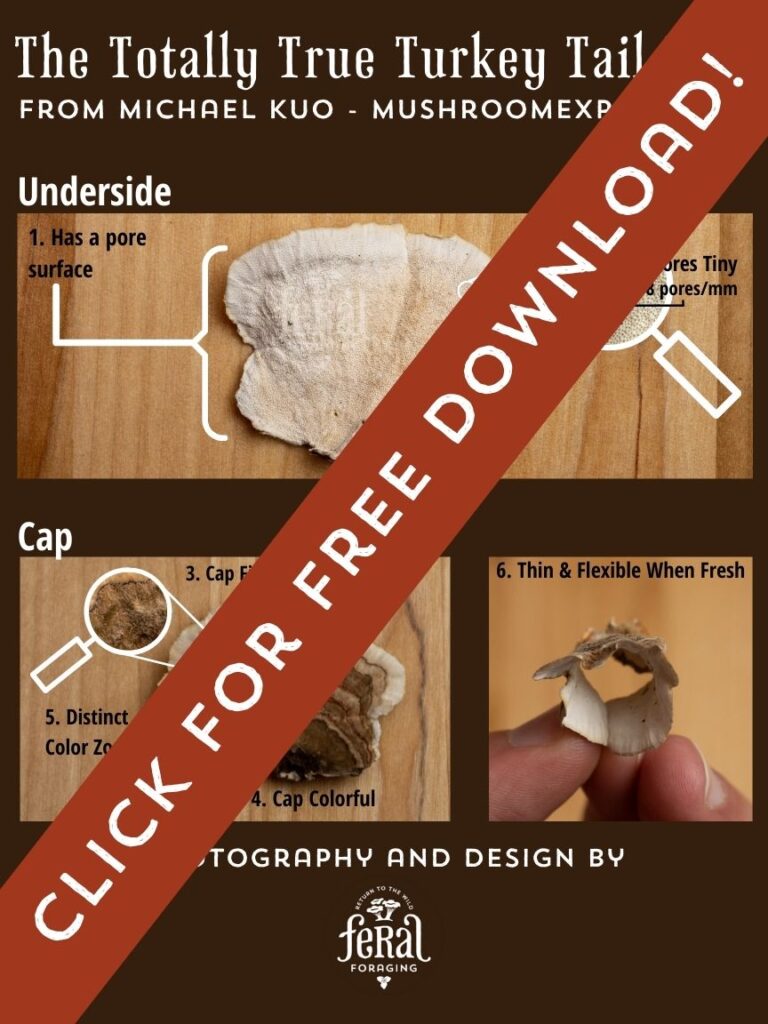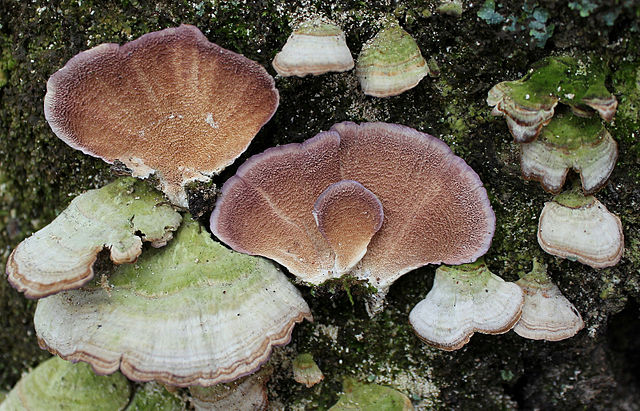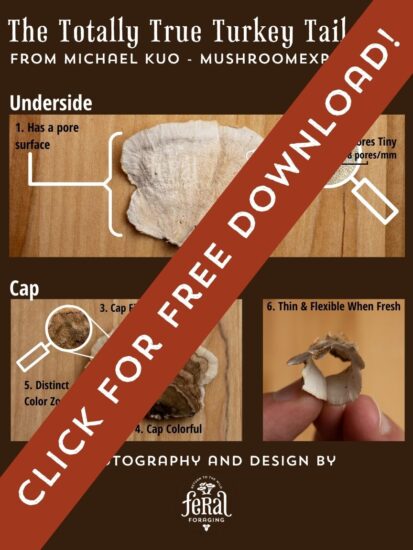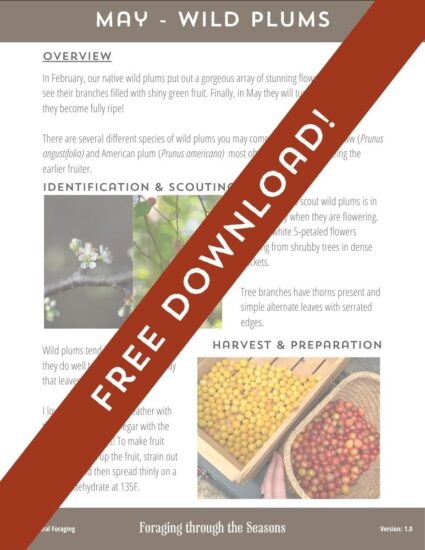Turkey Tail has quickly become one of the most popular consumer mushrooms on the market!
While we could go to the store to purchase it ourselves we would be depriving ourselves of the opportunity to spend time in nature foraging for it (and saving money!)
There are many lookalikes to Turkey Tail and before using it (or any foraged good), it is imperative that you understand Turkey Tail identification to confidently get a 100% positive ID!
Luckily for us Turkey Tail identification is approachable if you know what to look for!
This article highlights those details and how they distinguish Turkey Tail from its lookalikes.
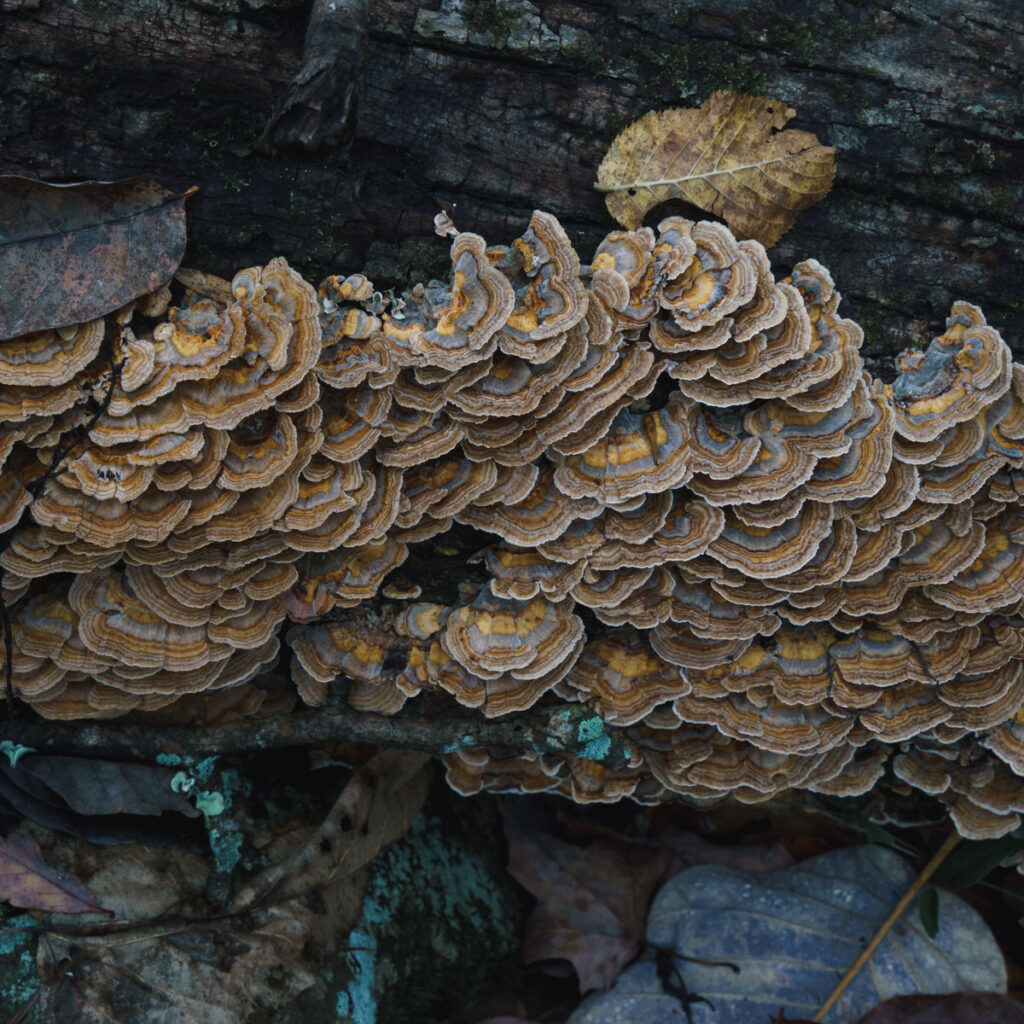
The Totally True Turkey Tail Test
In an effort to not reinvent the wheel, I’m just going to link an article which already has created a high effective method for determining if the mushroom you are observing is indeed True Turkey Tail or a lookalike.
It is called the “Totally True Turkey Tail Test”, devised by Michael Kuo of MushroomExpert.com (I also highly recommend MushroomExpert for all of your fungi learning and identification needs!).
Here is an overview:
- The underside of the mushroom contain pores (that should be white if fresh)
(See lookalikes for other types) - There should be about 3–8 pores per millimeter (difficult to discern individual pore with the named eye), NOT 1–3 pores per millimeter (easy to see with the naked eye) 👇 See below guide for examples
- The cap should feel fuzzy, velvety, or finely hairy to the touch
- The fresh cap should be colorful, not grayish or whitish
(Old specimens may not be colorful, see photos in article for examples) - The cap has distinct color zones
- The mushroom should be thin (and flexible if fresh)
Text explanations are great, but a visual guide is far more helpful in this scenario!
You can download my FREE guide, Photographic Totally True Turkey Tail Test and have it sent straight to your inbox!
What do "tiny" pores look like?
Step 2 of the test states, to look for “tiny” pores. Technically speaking, this means that per 1 mm there would be about 3-8 pores across. In order to better see that I took a photo with my macro lens to actually show turkey tail pores against a ruler.
There are two photos, taken at the same distance. The first is of Turkey Tail pores showing how with the specimen captured it has about 6 pores/mm. The second is of a false turkey tail which has large pores, there are only 3/mm.

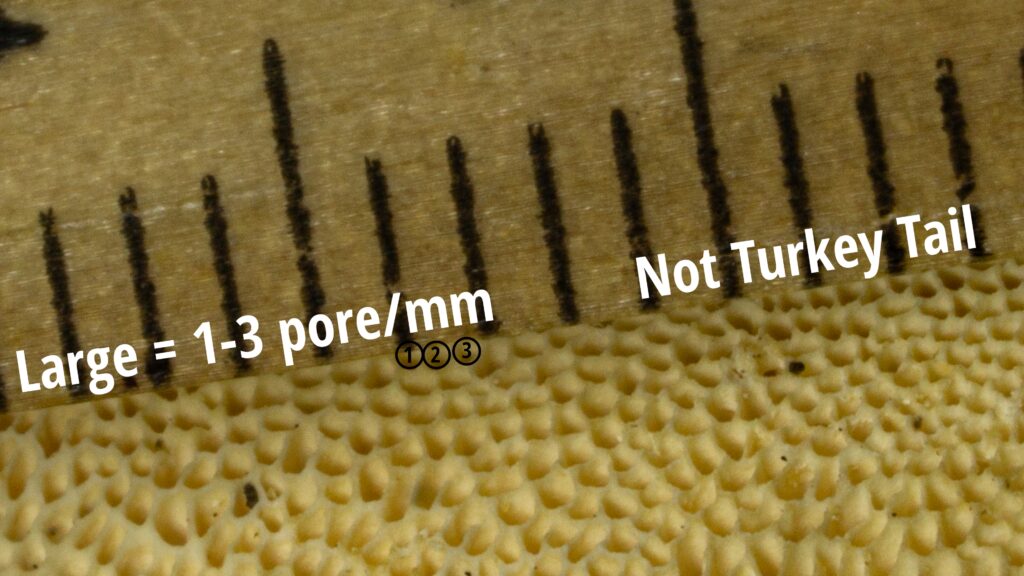
Most Common Lookalikes
These are the most common lookalikes of Turkey Tail that you’re likely to run into:
- “False Turkey Tail” – Stereum ostrea group
- Violet Toothed Polypore – Trichaptum biforme
- Gilled Polypore – Trametes betula
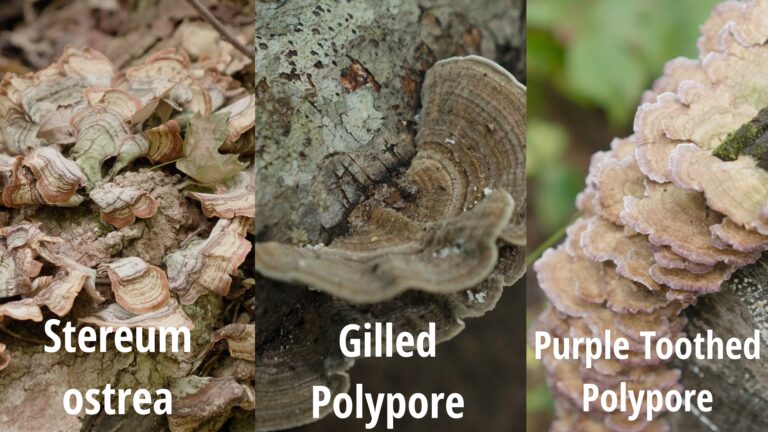
The above list contains, in my opinion, the most common lookalikes to Turkey Tail that you are likely to encounter when scouting for it out in the woods! There are of course many more, but this will get you started on seeing a few major differences between Turkey Tail. If you are using the test, these will all be eliminated fairly quickly!
"False Turkey Tail" - Stereum ostrea group
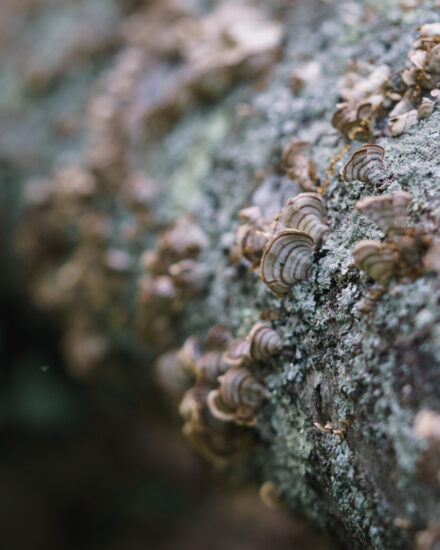
The first and most common lookalike comes from the Stereum ostrea group ( I say group because it looks like classic Stereum ostrea is not actually found in North America, so I’ll let the mycologists just sort that one out – article here to learn more)
Starting with Step 1 of the test, we’ll look at the underside of our specimen to check that it actually has a pore surface. Immediately we’ll notice that Stereum has a completely smooth surface, being a “crust” fungi, no pores to speak of! So we’ll know that it isn’t Turkey Tail.
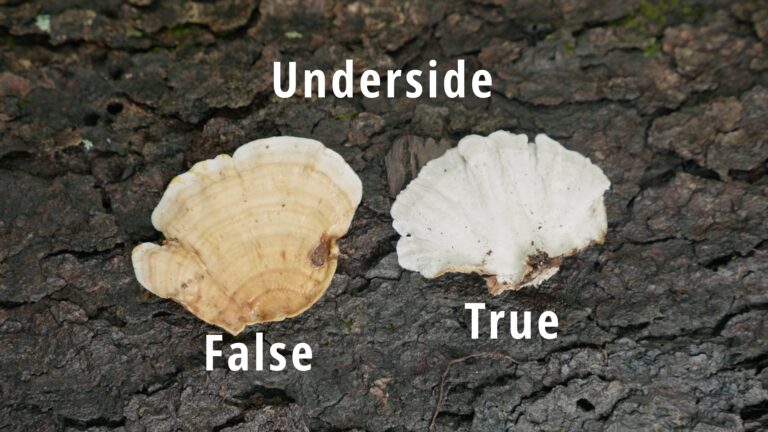
Here is another detail to look for. It definitely isn’t a hard and fast rule, but I find it to be true in most cases. Turkey Tail (especially if growing on the side of a log) will tend to have a more plane growth, whereas Stereum will almost always start to curve upward at the edges. This may save you a few trips across the forest floor to double check if a fungi in the distance is Turkey Tail or Stereum!
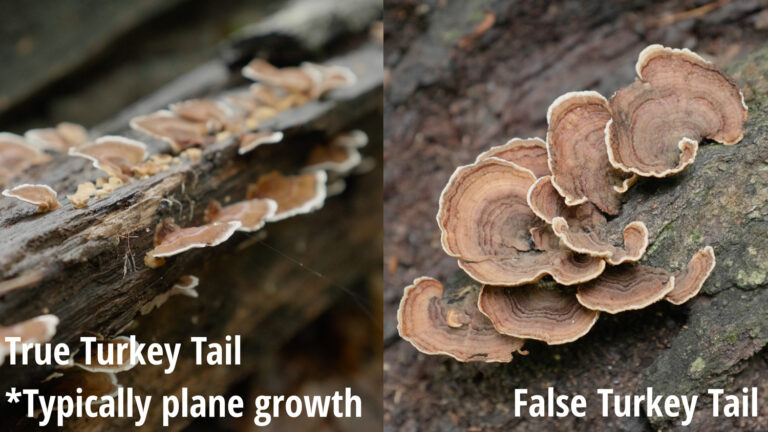
Violet Toothed Polypore - Trichaptum biforme
The second fungi we’ll compare to Turkey Tail is Violet Toothed Polypore, Trichaptum biforme. This is another fungi that is extremely common in the forest.
Like with Stereum, all that we have to do is check the underside and we’ll know right away that we don’t have Turkey Tail!
Below you’ll see the presence of teeth, hence the name of this mushroom.
Additionally, the cap is different as well. I think the most distinctive difference is that the margin of Trichaptum biforme tends to be purple to lilac in tone whereas Turkey Tail almost always has a vibrant white margin.
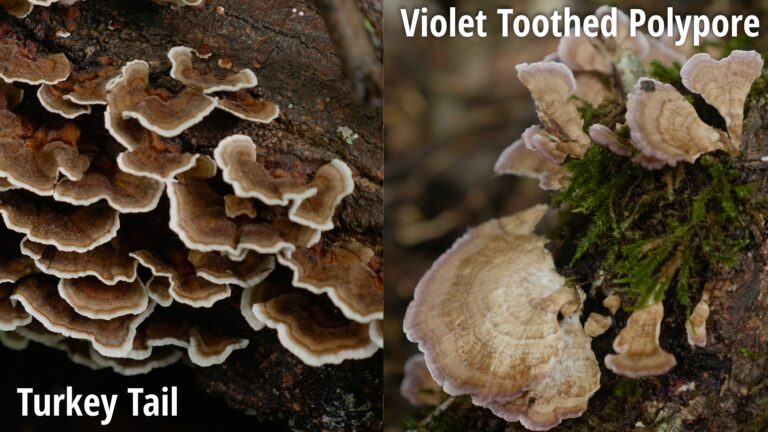
Gilled Polypore
The last lookalike to compare to Turkey Tail is Gilled Polypore (or Maze Polypore). To me, this one looks the closest to Turkey Tail by the cap alone. However, you probably guessed it, step one will eliminate this as a Turkey Tail candidate immediately just like the previous ones!
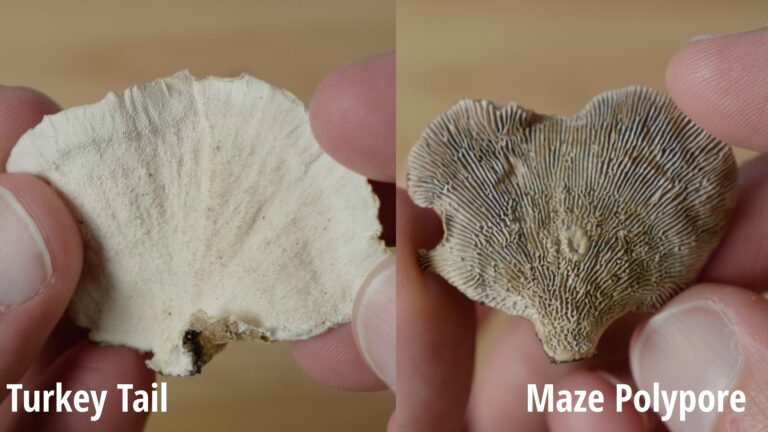
That is it for the lookalikes that we’ll compare in this article. There are of course, many more, but if you use the Totally True Turkey Tail test you will be able to determine that they are not a true Turkey Tail!
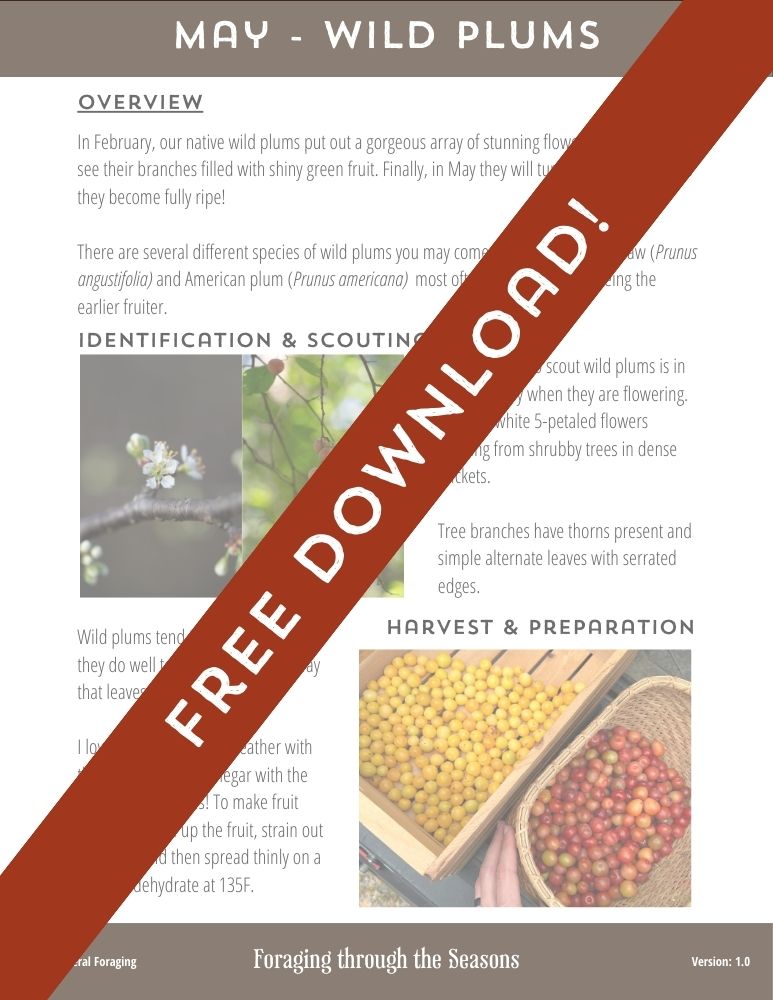
Get my foraging guide!
Learn an amazing wild food for each month of the year with my guide, Foraging through the Seasons!
Enter your email below to have this FREE guide sent straight to your inbox!
Photographic Turkey Tail Test
Don’t forget your guide!
I made a photographic Totally True Turkey Tail Test that you can print and bring with you in the woods! It is FREE to download. You can get your copy by clicking the photo below!
If you got value from this article, please share it for others to benefit from as well!
